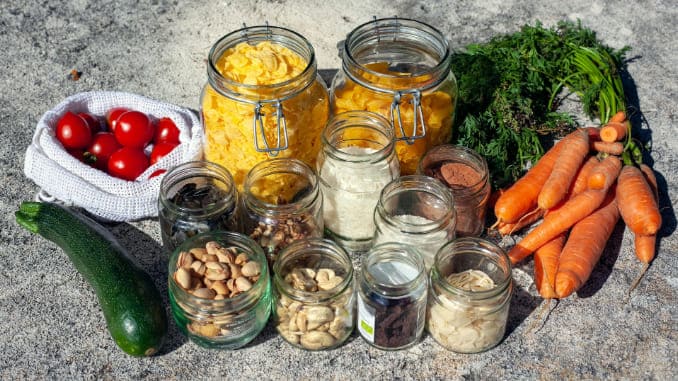5 Low-Waste Grocery Shopping Tips for Sustainability-Minded Shoppers
Photo by Jas Min/Unsplash
It’s the unfortunate truth that these days, buying food often means producing a lot of waste. There’s the food waste we produce when we don’t eat all the food we’ve purchased before it goes bad, of course, but there’s also the waste that comes from food packaging. Ideally, we’d all work to be as close to zero-waste as possible, but that can be tricky to do depending on the kinds of grocery stores you have access to, the amount of time you have to spend on food shopping and any kind of dietary restrictions you may have.
But just because we can’t all achieve perfect zero-waste status in the kitchen doesn’t mean we shouldn’t try to reduce our food packaging consumption and aim for a low-waste lifestyle. By making a few small changes, we can cut down on the amount of trash that ends up in the landfill thanks to our snacking habits. Here are some simple tips to reduce food packaging waste.
1. Bring your own bags and containers to the store.
Shopping low-waste can be as easy as bringing your own bags and containers to the grocery store. Having some shopping bags on hand can cut down on the number of plastic bags you end up using at the checkout, and you can even bring smaller bags for produce. If you shop at a store that has a bulk section, consider bringing your own reusable jars instead of filling up new plastic bags every time you shop.
However, don’t assume that reusable bags are always a better choice than plastic. Although plastic bags can be bad for the environment in many ways, they take fewer resources to produce than cotton bags and bags made from many other materials. Therefore, it’s probably not a good idea to buy a new reusable bag every time you forget yours when you go shopping. Instead, try to use the bags you already have over and over again to reduce your carbon footprint at the grocery store.
2. Buy non-perishable items in bulk.
A lot of ingredients come in an unnecessary amount of packaging that just gets thrown out the second you cook the food. Therefore, it makes sense to buy non-perishable items in bulk instead of buying the smaller-portioned and hyper-packaged versions of the same foods. At many stores, you’ll find nuts and seeds, dry beans, oatmeal and other grains and even spices available to buy in bulk for a more low-waste option. Not only will this cut down on the amount of packaging waste you’re throwing away, but there’s also a good chance it’ll save you some money at the same time.
-

-

-

-

-

-

-

-

-

-

-

-

-

-

-

-

-

-

-

-

-

-

-

-

-

-

-

-

-

-

-

-

-

-

-

-

-

-

-

-








































